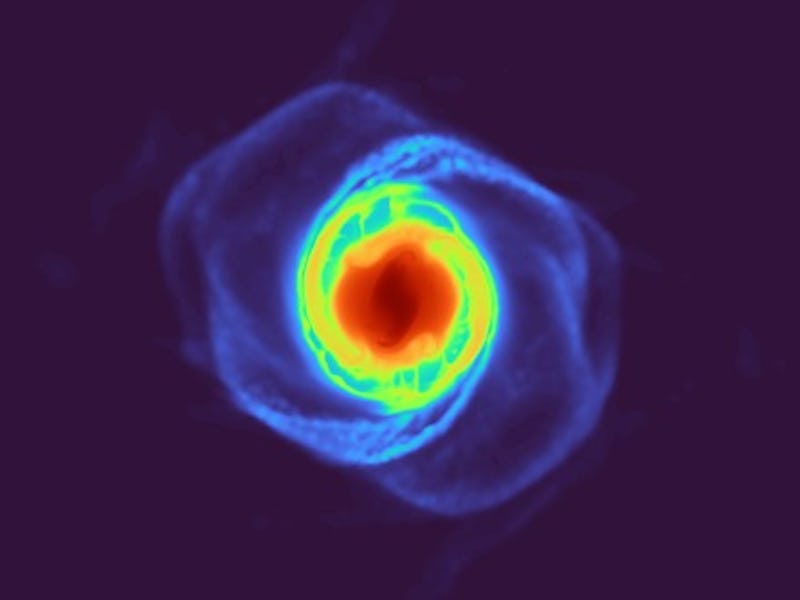Astronomers Discover a Weird Exoplanet Denser Than Steel
Astronomers have discovered a surprising world.

Astronomers got a huge surprise when they peered 545 light-years away.
It’s a planet the size of Neptune — but confusingly, it’s 73 times the mass of Earth. For comparison, Neptune is 17 times the mass of Earth, and Saturn 95 times Earth’s mass. That makes it “denser than steel,” according to an announcement from the University of Bristol, an institution involved with the work. According to the study, this means its mass is “almost twice that of any other Neptune-sized planet known so far.”
To categorize exoplanets, or planets orbiting stars other than the Sun, astronomers lean on Solar System descriptors. After noticing an interesting object, roughly Neptune’s size and near a dwarf star, they looked for more details about it from a variety of land and space-based telescopes. After confirming what they saw was indeed a planet, and not a star, they were left with a cosmic puzzle.
The best explanation for its odd characteristics is an epic collision. The work is described in a new study published Wednesday in the journal Nature.
The Keck telescopes in Mauna Kea’s summit in Hawaii.
Is there a huge diversity of planets?
More than 5,500 exoplanets have been discovered so far, and from them, astronomers know that exoplanets come in a variety of sizes and compositions.
Exoplanets often “have no analog” in our Solar System, according to study co-author Phil Carter, computational planetary scientist at the University of Bristol’s School of Physics. But as strange as they get, there could be straightforward, albeit dramatic, explanations.
The team ran simulations of giant impact scenarios to find a solution for why this exoplanet, called TOI-1853b, was so weird. The researchers concluded that in its former life, TOI-1853b would have been a water-rich gas giant.
To lose its lighter atmosphere and ice, and get to be the ultra-dense world it is today, another massive object like a planet would have had to slam into TOI-1853b at 75 kilometers per second, Carter explains in the university’s announcement.
Why does TOI-1853b matter?
“This planet is very surprising,” Jingyao Dou, study co-author and postgraduate student at University of Bristol, shares in the announcement.
Giant impacts could be a prevalent origin story for many exoplanets throughout the Milky Way, the simulations of this new research suggest.
The new work is also a testament to what modern telescopes can achieve. The new work was made possible thanks to data from NASA’s Transiting Exoplanet Survey Satellite (TESS) in space, as well as the Keck II telescope in Hawaii, the Gemini North telescope in Hawaii, the Southern Astrophysical Research telescope in Chile, and the Telescopio Nazionale Galileo in the Canary Islands.